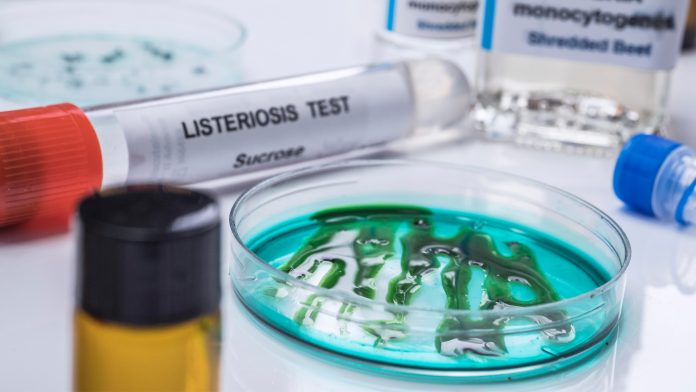For years, food safety specialists have been fighting with the prevention and eradication of Listeria in our food. But what has changed in the prevention of this deadly bug?
Listeria is often found in foods, especially frozen food. Once infected with Listeria, humans present symptoms such as fever, chills, nausea and diarrhoea. According to the Center for Disease Control and Prevention, USA, an estimate 1,600 people get infected with Listeria in the US each year, with around 260 of which die from the disease.
Monitoring frozen food practices
Funded by the Frozen Food Foundation (FFF), new research has evaluated the current environmental monitoring practices being implemented across the industry in order to control Listeria outbreaks.
Using an anonymous survey tool, researchers from the University of Georgia gathered information from over 45 frozen food facilities. The research team monitored varying practices across the industry, this data indicated that facilities were predominantly testing for Listeria in the environment (walls, floors and drains).
“This study is part of the frozen food industry’s commitment to better understand Listeria in frozen food facilities by reviewing current practices,” said FFF Executive Vice President, Dr. Donna Garren.
Garren continued: “This research helps implement the frozen food industry’s science-based environmental monitoring programmes to identify and reduce the risk of Lm.”
“Lm is a challenge because of its ubiquity and ability to survive freezing,” said Garren. “UGA’s research will help the industry to identify appropriate sampling locations, timing and frequency to address the potential risk of this pathogen.”
Using packaging to prevent disease
A novel composite film—created by the bonding of an antimicrobial layer to conventional, clear polyethylene plastic typically used to vacuum-package foods such as meat and fish—could help to decrease food-borne illness outbreaks, according to researchers in Penn State’s College of Agricultural Sciences.
The antimicrobial lining of the film is comprised of a pullulan-based biopolymer produced from starch syrup during a fermentation process, which is already approved for use in foods. Pullulan, a water-soluble polysaccharide, is essentially a chain of sugar, glycerin and cellulose molecules linked together. To kill pathogens such as Salmonella, Listeria and pathogenic E. coli, researchers infused the pullulan with Lauric arginate, made from naturally occurring substances and already approved for use in foods.
Development of the composite antimicrobial film is important because 76 million cases of food-borne illnesses occur each year in the US alone, resulting in 300,000 hospitalisations and 5,000 deaths, according to the US Centers for Disease Control and Prevention. In light of this problem and the commercial potential of this discovery, Penn State has applied for a provisional patent on the composite antimicrobial film.
Listeria in rakfisk
Rakfisk, made from lake trout or arctic char, is made by mild-salting and brine maturation at a low temperature for months, rakfisk is then eaten without heating.
Research shows that the ripening temperature had a large impact on Listeria monocytogenes growths during the production process of rakfisk.
Outbreaks of listeriosis as a result of rakfisk consumption were not recorded until recently, and health officials recommend that those with a weakened immune system should not consume rakfisk.
At this time, there are no critical control points during the production process that guarantee elimination of listeria monocytogenes in rakfisk.
The high sodium chloride concentration of 6.3% can delay the growth of Listeria, however, it is still present. Lower temperature (lower that 4 degrees Celsius) restricted the growth of Listeria, however these temperatures extend the maturation time.
What are the European officials doing to avoid further infection?
The European Court of Justice has issued a Court Order that enables food companies to continue the use of phages to prevent Listeria on all ready to eat foods in the absence of a legal EU framework.
Phages that specifically kill Listeria can be used during food processing to prevent spreading of these deadly bacteria on food. Over the past months Listeria outbreaks have claimed hundreds of deaths, miscarriages and hospitalisations in Spain, Germany, Austria, Switzerland and the Netherlands and have provoked public concern.
The recent Listeria food crises in Europe also revealed that even if a product has legally acceptable low levels of Listeria – and is thus considered to be ‘safe’ – the bacteria can grow out to deadly levels when kept on store shelves and even at home in the refrigerator.
Whilst food processors are responsible for proper hygiene, they lack tools to deal with naturally present Listeria and have urgently called for innovation and additional tools to keep our food safe. At the same time consumers are calling for minimisation of chemical preservatives on food, as these can affect the human microbiome, which is an important part of our immune system. Phages represent an entirely new category in food safety, without these drawbacks. But ironically, the fact that the use of phages differ from existing methods has been the very cause of delay in their acceptance in the EU.







